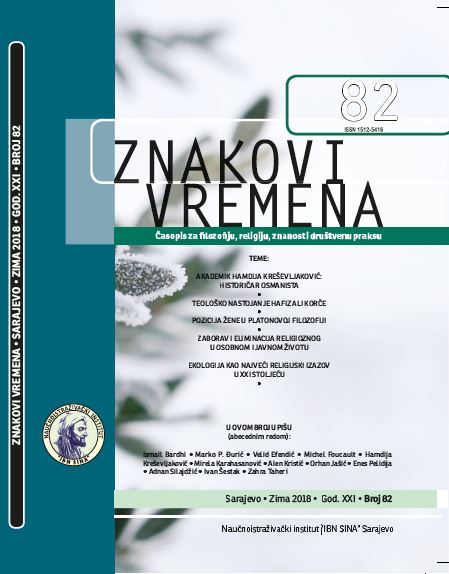Od asketa-sufija Mezopotamije do sufija Horasana (2)
From Ascete - Sufis of Mesopotamia to Sufis of Khorasan
Author(s): Zahra TaheriContributor(s): Mubina Moker (Translator)
Subject(s): Theology and Religion, Islam studies
Published by: Naučnoistraživački institut »Ibn Sina«
Keywords: Fatima al Nisaburiya; Um Ali; Um Abdullah; Aisha; Hafsa Nisaburiya; Aisha Nisaburiya and Um Ahmed;
Summary/Abstract: In my life I have seen only one woman and one man. This woman was Fatima of Nishapur (Fatima al-Nisaburiya). There was no (Sufi) order that I talked to her about, that she did not clearly look at it. (Bayazid Bistami) Rabiʿa al-ʿAdawiyya established a boundary line between two periods of Tesawwuf, and replaced asceticism with love. Belief in a direct connection between the Creator and man made her a “champion” of the seemingly heretic speech of the later periods of Tesawwuf. In the aftermath of Rabbi’a, Khorasan became the cradle of the Iranian-Islamic Tasawwuf and Gnosis, and the Horasan women, before all Nishaburia’, found themselves on that spot. Sulemi records the names of over thirty Khorasan women who belonged to the group ‘Fitjan’ and were distinguished by keramats. Among the prominent Sufi women of this era in Nishapur are Fatima al Nisaburiya (Fatima of Nishapur), Um Ali, Um Abdullah, wife of Abdullah Sadzzi, one of the Khorasan Sheikhs; Aisha, Abu’s wife Hafsa Nisaburiya; Aisha Nisaburiya, daughter of Abu Osman Hayriya and Um Ahmed - her granddaughter; Um Hussein, the daughter of Ahmad ibn Hamdan; Um Kulsum, Aziza Herevi, Um Ali, daughter of Abdullah Hamshaz; Avne Nishaburi, Umet al-Aziz, Sarira Sharki.
Journal: Znakovi vremena - Časopis za filozofiju, religiju, znanost i društvenu praksu
- Issue Year: XXI/2018
- Issue No: 82
- Page Range: 189-213
- Page Count: 25
- Language: Bosnian

